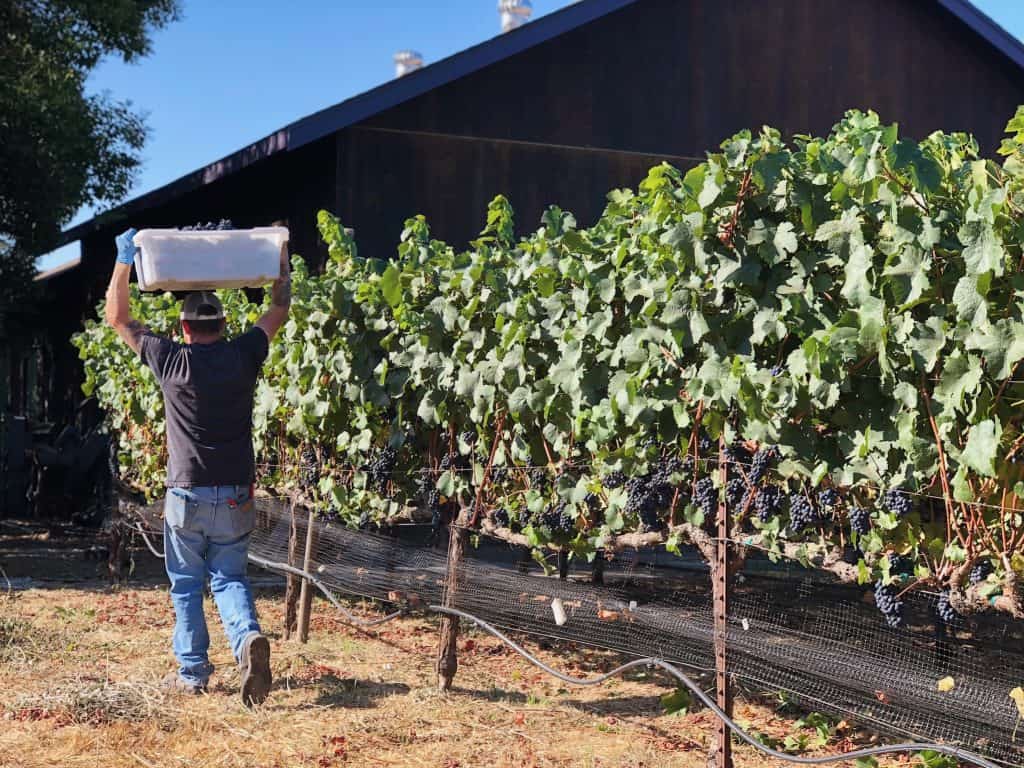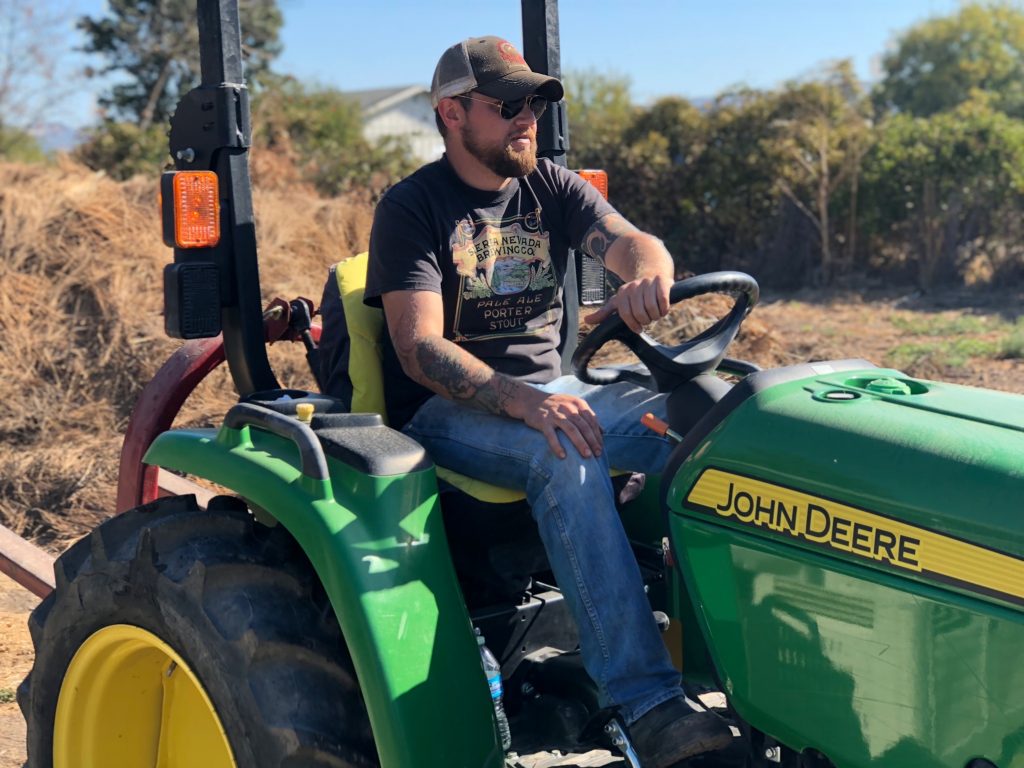One of the great pleasures of writing about wine will always be the sense of discovery it affords. The wine world is always changing. Every vintage is a new crop. And new wine projects continue to emerge.
I particularly enjoy the opportunity to be introduced to new producers that Vinography has afforded me over the years. There’s something thrilling about opening up an unsolicited box on the doorstep to see a set of bottles with a name on them I’ve never heard of before, and even more so when the wines turn out to be excellent. There are plenty of times, of course, when the wines aren’t so great. But when they are, it feels a bit like striking buried treasure.
By now most people have heard the joke about making a small fortune in the wine industry. It takes a lot of capital to start a wine label even if you have no plan to own your own vineyard or winemaking facility. Good grapes cost thousands of dollars per ton (each ton will make approximately 25 cases of wine), new barrels cost between $900 and $2000, and then there’s the cost of bottles and corks, labels and capsules. The list of supplies goes on and on, and that’s even before the fees for renting space in a custom crush facility.
So what is an enterprising first-time winemaker to do when they don’t start with the large fortune of the aforementioned punchline? They get scrappy.

Jess Wade was born and raised in Sonoma County to a family of chefs. His mother works in some of Sonoma’s better-known restaurants, and his father has supplied many of those same restaurants with fresh pasta for decades, from his Wine Country Pasta. Wade grew up underfoot in kitchens large and small. A culinary upbringing seems not an uncommon road to winemaking, but before Wade got there, he had to find out just how much he hated the world of banking and the urban lifestyle.
Wade started working in a bank in high school, and when he graduated he headed off to the city to go to college and begin what he thought was his journey to leave his small town life behind.
“It was culture shock, pure and simple,” says Wade. “I realized it just wasn’t for me.”
So Wade dropped out of school and moved back to Sonoma County to begin working in bars and restaurants. But one day a friend told him that he had gotten a harvest job down on the central coast, and that the employer was looking for a few more hands.
“One of my great childhood memories is helping my grandfather make homemade wine when I was 10 years old,” says Wade. “It was about family, and camaraderie, and it just made me so happy.”
So on a lark, he told his friend that he’d join him down at Rancho Sisquoc for the summer of 2007.
“Within two weeks,” recalls Wade, “I knew it’s what I wanted to do for the rest of my life.”
Eight years of patchwork harvest jobs, restaurant work, occasional wine industry consulting, and opportunism followed. Wade’s enthusiasm for every aspect of viticulture and winemaking endeared him to more than one winemaker and vineyard manager, and like a sponge, he soaked it all up, offering to work for free with folks that he thought had something to teach him. In the process, Wade built up a pretty solid amount of experience in both the vineyard and the cellar.
During this time Wade was traveling throughout Sonoma County, and would frequently come across what might best be described as hobby vineyards—tiny parcels of vineyard (from .5 to 3 acres in size) many of which were neglected or even completely abandoned. There was one three-acre parcel in particular for which Wade even went so far as to dig up property records at the local courthouse, hoping he might petition the owner to let him farm it, but he never received an answer.

In 2016, Wade decided he needed to fully take the plunge into the world of wine.
“I packed a bag and bought a one way ticket to Australia, leaving right after Christmas in 2015,” says Wade. He stayed with friends in Melbourne and got a harvest job in the Clare Valley. He finished harvest there, and 36 hours later he was in Central Otago working a harvest in New Zealand.
He loved every minute of it, and thanks to almost a decade of catch-as-catch-can wine work, he found himself to be one of the more experienced and knowledgeable hands in the cellar and out in the field. And that might have simply been the beginning of his life’s journey, had he not received the phone call that would change everything.
“One of my old customers told me they had a small vineyard in Sonoma and that they needed help farming it. They said they’d basically split the profits with me if I’d come take care of it for them,” says Wade. The chance for complete ownership of winegrowing was too much of a temptation to resist, and so Wade decided to return.
He began farming that small vineyard, enrolled in the Wine Business program at Sonoma State, and all of a sudden, things started falling into his lap. A neighbor of his old customer saw what a good job he was doing with their vines, and asked him if he’d do the same with his 4 acres of Pinot Noir. Wade finally got a reply from the family who owned that three-acre parcel of land he had been writing letters about. He met with them, hit it off, and struck yet another deal to farm it in exchange for a share of the profits and a share of the fruit. Another tiny producer wanted to make the leap from home winemaking to having a legitimate winemaker and had heard things about this local kid who knew what he was doing.
In little more than a year, Wade found himself running a small, but legitimate vineyard management and winemaking consultancy with some very weird economics (who gets vineyards for free in this day and age?) that worked perfectly for a young man with boundless energy.
Wade would work in the vineyards by day, in restaurants by night, work in the cellar while studying even later at night, and get up in the morning and do the same thing over again. All the while, Wade was building towards his goal of making wine. But that required cash, and while people seemed to be willing to give Wade vineyards for free, cash was not so easy to come by.
“I remember when I was trying to buy my first barrels,” recalls Wade, “and a friend called me up and told me there was this huge pile of bricks left over at the construction site he was working at, and did I know anyone who wanted them? I did a quick Google search and saw that reclaimed vintage bricks were a thing, and so I went over with my trailer and picked them up and started selling them online.”

Brick money, tip money, savings, and scrapings. A ton of grapes from this vineyard, a ton from that one. In 2018 Wade finally made some wine of his own under the name he selected for his brand: Topophilia, which translates to “love of place.”
And I’m here to tell you they’re good. Damn good.
In his typical scrappy fashion, Wade, now 34, enlists his friends and family to help him pick these tiny vineyards in the middle of the night. He brings his fruit to the 8th Street winery collective where he does around 50% whole-cluster fermentation with everything, a few punchdowns, and some extended maceration, sometimes up to 45 days, before pressing to barrel. None of the wines see more than 50% new oak.
“I’m not a super complicated guy, and I try not to make my wine complicated either,” says Wade. “I lean towards less alcohol and more acid, and try to keep things in a cooler-climate style.”
Topophilia’s production stands at about 400 cases per year, right now, and Wade seems cautious about growing it too fast.
“I’ve seen a lot of wineries go from 100 cases to 1000 cases and then fall flat on their butts,” he says. So he’s looking to grow by a ton or two at a time. Which, if he keeps finding half-acre vineyards in the nooks and crannies of Sonoma County, might just work out fine.
Indeed, he’s found another hobby vineyard with Cabernet and Cabernet Franc that he’s been rehabilitating. He’s moving into a little cottage on another vineyard he farms in Carneros and plans on replanting it to Grenache, but also wants to play with Zweigelt. All of this in his spare time.
“I’m now to the point where I’m supporting myself by making wine and farming, but that’s about it. I can afford sweat equity,” laughs Wade. “I still don’t sleep that much.”
Tasting Notes

2018 Topophilia Pinot Noir, Carneros, Sonoma, California
Light to medium ruby in the glass, this pale wine smells of very pretty floral and berry notes. In the mouth, silky and bright flavors of raspberry and citrus mix with redcurrant and crabapple. Intense, even sour, acidity keeps the mouth watering. Very lean, with herbal notes lingering in the finish thanks to about 30% whole-cluster fermentation. 14.2% alcohol. 130 cases made. Score: between 8.5 and 9. Cost: $45. click to buy.
2019 Topophilia “Valerie’s Vineyard” Rosé of Pinot Noir, Carneros, Sonoma, California
Palest peachy pink in the glass, this wine smells of hibiscus, wet pavement, and rosehips. In the mouth, vibrant rosehip, redcurrant, and citrus peel flavors are positively bursting with acidity and tang. Mouthwatering and silky with a hint of saline to finish. Excellent. 11.6% alcohol. 150 cases made. Score: between 9 and 9.5 . Cost: $25. click to buy.
2018 Topophilia “Placida Vineyard” Pinot Noir, Russian River Valley, Sonoma, California
Light ruby in the glass, to the point of nearly looking like a rosé with only a couple of ounces of wine poured, this wine smells of raspberry and floral notes with a touch of herbs. In the mouth, silky-textured flavors of raspberry and raspberry leaf, herbs, and flowers have a bright citrus acidity to them and a wonderful vibrance. Notes of dried herbs linger in the finish. Receives about 40% whole cluster fermentation. 14.2% alcohol. 55 cases made. Score: around 9. Cost: $55. click to buy.